Demand Learn more about Demand
-
Falling coffee prices and rising demand for coffee beans may improve the quality of the products.
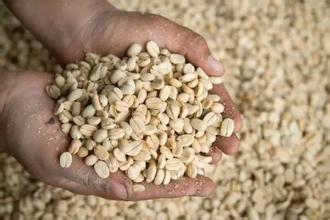
Mingtai, a commodity research institute, believes that due to global warming, the global coffee supply is decreasing, Brazil is the world's largest coffee producer, and coffee prices in Arabica have fallen by 35% in the past year. The demand for a cup of high-quality coffee is on the rise, and the supply of high-quality coffee may not keep pace with the demand for the next three to five years. Cafes all over the UK, fine production and high quality coffee
2016-01-26 Coffee price demand products improvement quality commodities research institutions Mingtai recognition -
Analysis of Coffee demand data in China in recent five years
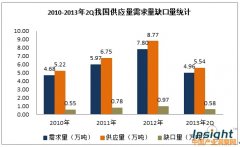
There are records of coffee in the poems of the late Qing Dynasty, such as the bamboo branch word "Kao Fei", which was popular in Shanghai at that time. Colored sugar is sweet and bitter, and westerners cook tea for each meal. In the 1920s and 1930s, some cafes have appeared in old Shanghai and Kunming. Coffee shops and cafes temporarily disappeared at the beginning of the founding of New China. After the reform and opening up
2015-09-08 China five years coffee demand data analysis late Qing Dynasty ci there are about -
Analysis of Coffee demand data in China in recent five years
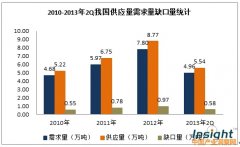
With the opening of the country, coffee began to appear in the eastern coastal cities. There are records of coffee in the poems of the late Qing Dynasty, such as the bamboo branch word "Kao Fei", which was popular in Shanghai at that time. Colored sugar is sweet and bitter, and westerners cook tea for each meal. In the 1920s and 1930s, some cafes have appeared in old Shanghai and Kunming. New
2014-12-16 China five years coffee demand data analysis along with the door open -
Global coffee demand grows at an average annual rate of 2.5% before 2020

The National Coffee Organization (OIC) predicts that global coffee demand is expected to grow at an average annual rate of 2.5% in the next six years, driven by strong demand from China, Russia and other countries. Demand will reach 175 million bags (60 kg each) in 2020, compared with 149.45 million bags in 2014. The agency said that this year's global production shortfall is 800000 bags, but for this situation.
2014-11-21 Coffee News Coffee growth Coffee consumption -
British media: demand for instant coffee in Asia rises, cheap coffee beans become mainstream

[global Network Comprehensive report] according to Reuters on December 3, the recent strong demand for instant coffee in Asia has stimulated the expansion of the cheap coffee market. Over the next 10 years, relatively inexpensive robusta beans will overtake expensive Arabica beans in the market, according to industry officials. In emerging markets such as China and India, rising incomes have led to a craze for coffee consumption.
2014-12-05 British media Asia instant coffee demand rising cheap coffee beans mainstream global -
Demand for coffee in Europe began in the 17th century with charcoal coffee stoves

In the 17th century, demand for coffee emerged in Europe, and small quantities of roasted coffee beans began to be imported to Yemen. In the 18th century, coffee shops were everywhere in Europe, coffee consumption soared, and Yemeni mocha alone was no longer enough. It is estimated that Yemen's coffee bean production in 1970 was about 20,000 tons, which is already insufficient to meet the newly emerging European demand. Bean prices remain high,
2016-04-20 Europe Emergence Coffee Demand Beginning 17th Century Charcoal -
The emergence of coffee demand in Europe began in the 17th century

In the 17th century, there was a demand for coffee in Europe and began to import small quantities of roasted coffee beans from Yemen. In the 18th century, with the fragrance of European cafes and the sharp increase in coffee bean consumption, the Yemeni mocha alone was no longer enough. It is estimated that the output of coffee beans in Yemen in 2007 ○○ is about 20, 000 tons, which is stretched to meet the rising demand of Europe. The price of beans is high and the port of Mocha is busy.
2015-04-02 Europe the emergence of coffee demand began in the 17th century. -
Us: demand for coffee fell for the first time in six years as disposable coffee became popular

Coffee consumption in the United States will fall for the first time in six years because of the popularity of disposable coffee, while Americans spend more on coffee because of the high price of disposable coffee, according to the U.S. Department of Agriculture. Hugo learned from recent foreign media reports that according to the coffee report released by the United States Department of Agriculture on Friday, coffee consumption in the United States from 2015 to 2016 is expected to disappear.
2015-06-27 United States coffee demand for the first time in years falling disposable popular farmers -
Coffee culture the emergence of coffee demand in Europe began in the 17th century.

In the 17th century, there was a demand for coffee in Europe and began to import small quantities of roasted coffee beans from Yemen. In the 18th century, with the fragrance of European cafes and the sharp increase in coffee bean consumption, the Yemeni mocha alone was no longer enough. It is estimated that the output of coffee beans in Yemen in 2007 ○○ is about 20, 000 tons, which is stretched to meet the rising demand of Europe. The price of beans is high and the port of Mocha is busy.
2015-04-02 Coffee culture Europe emergence coffee demand began in the 17th century. -
Coffee culture the emergence of coffee demand in Europe began in the 17th century.

In the 17th century, there was a demand for coffee in Europe and began to import small quantities of roasted coffee beans from Yemen. In the 18th century, with the fragrance of European cafes and the sharp increase in coffee bean consumption, the Yemeni mocha alone was no longer enough. It is estimated that the output of coffee beans in Yemen in 2007 ○○ is about 20, 000 tons, which is stretched to meet the rising demand of Europe. The price of beans is high and the port of Mocha is busy.
2015-04-03 Coffee culture Europe emergence coffee demand began in the 17th century. -
Coffee common sense: there must be sufficient demand for coffee to move towards mechanization

In order to move towards mechanization, there must be sufficient demand. In order to reduce labor dependence and improve productivity, Xin Longli invested in improving production technology, but in the end, it did not come into use.
2014-12-05 Coffee common sense talk trend mechanization must have enough demand machinery -
The emergence of coffee demand in Europe began with the history and culture of coffee in the 17th century.

In the 17th century, there was a demand for coffee in Europe and began to import small quantities of roasted coffee beans from Yemen. In the 18th century, with the fragrance of European cafes and the sharp increase in coffee bean consumption, the Yemeni mocha alone was no longer enough. It is estimated that the output of coffee beans in Yemen in 2007 ○○ is about 20, 000 tons, which is stretched to meet the rising demand of Europe. The price of beans is high and the port of Mocha is busy.
2015-02-12 Europe emergence coffee demand began in the 17th century history and culture the 17th century. -
The price of boutique coffee beans is a little cheap and expensive. Why is there a big price gap?

Professional coffee knowledge exchange more coffee bean consultation Please follow the coffee workshop (Wechat official account cafe_style) from a political point of view, the prices of goods on the market are inseparable from this law: in short, it is the relationship between supply and demand. When supply exceeds demand, the price goes down, on the contrary, the price rises naturally. There is also a saying that things are scarce, that is, when the quantity is extremely rare,
2021-06-09 Boutique coffee beans price some cheap why gap big professional coffee -
Behind Lucky's crazy growth: the rapid rise of coffee demand in China?

Lucky's current growth is mainly driven by the opening of stores, and short-term losses continue under the subsidized education model. Lucky has 2370 stores as of 2019Q1, and plans to accelerate the opening of 2500 stores in 2019. At this stage, lucky is shop-driven, the actual unit consumer purchase volume has not increased significantly, before the formation of stickiness, the marginal benefit of permeability has a decreasing trend. Considering the subsidy. Present stage
2019-05-28 Lucky crazy growth behind China coffee demand fast rising lucky current -
Global coffee demand rose 2% year-on-year in fiscal year 2011-2012

Against the backdrop of rising coffee use in major emerging markets, especially in Asia and South America, global coffee demand rose 2 per cent year-on-year in the 2011-2012 fiscal year, US media reported on May 17th. According to the latest Bloomberg survey report, against the background of rising global coffee consumption and low listing volume, coffee futures closed by the end of May 2012.
2014-04-27 2011 dint 2012 FY Global Coffee demand YoY rising Mei -
Home demand for epidemic prevention has soared, global coffee bean prices have soared

Coffee prices have risen sharply over the past month as the global lockdown has triggered panic buying among those trapped at home craving caffeine, but the future of the commodity is uncertain. Arabica index futures for May delivery in New York rose 15 percent from the previous month to trade around $1.20 a pound on the 16th. After months of fluctuating prices, coffee prices have risen significantly recently. coffee
2020-04-19 home epidemic prevention demand surge global coffee beans price -
Strong demand affects Cooperative Bank to raise shortage forecast of coffee market
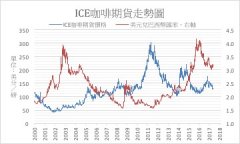
Agrimoney.com reported on May 22nd that the latest report of the Dutch Bank of Cooperation (Rabobank) raised its supply shortage forecast for the global coffee market in 2013 by 1 million packets (60 kg each), mainly due to strong demand. The bank also said that in view of the upward forecast of supply shortage in the coffee market, coffee prices will be more sensitive to weather conditions in Brazil, the largest producer.
2017-05-24 Demand strong impact cooperation banking upward adjustment coffee market shortage forecast -
Demand Analysis of Chinese Coffee Industry in 2014

According to China Industrial Insight Network researchers: in late March, coffee harvest is coming to an end in Yunnan Province, which accounts for more than 99% of China's coffee acreage and output. Affected by the international market, after more than two years of "price winter", the purchase price of coffee beans has soared this year, from about 13 yuan per kilogram to about 25 yuan at present.
2014-06-05 Coffee News Chinese Coffee demand Analysis -
The coffee market is growing explosively and the demand for coffee machines is also rising.

It is understood that China's ready-to-drink coffee and energy drinks market is worth US $6 billion and is expected to grow by a further 20 per cent in the next three years. China is Starbucks' fastest growing market outside the United States. Starbucks has more than 1500 stores in China. Apart from the rapid expansion of stores, Starbucks obviously does not want to miss China's fast-growing ready-to-drink coffee market. And choosing to form an alliance with Master Kang
2015-03-23 Coffee market hairstyle growth coffee machine demand rising -
Analysis on the Development trend of domestic Coffee Industry
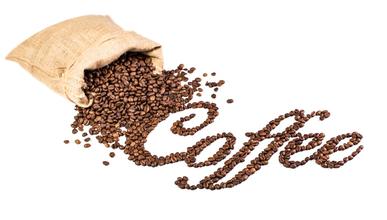
From the analysis of coffee production and consumption at home and abroad, we can see that the supply and demand of coffee in the world is basically balanced, but the supply of high-quality products still exceeds the demand. In order to meet the needs of the market, the foreign coffee growing industry tends to develop high-quality small-grain coffee. The demand for coffee in the domestic market is increasing, and there is a large gap between supply and demand. Therefore, our country still needs to import coffee raw materials and coffee products every year to meet the needs of the market. Yunnan
2016-12-28 Domestic coffee industry development trend analysis domestic and foreign production consumption
